Activated DRP1 promotes mitochondrial fission and induces glycolysis in ATII cells under hyperoxia
- PMID: 39725939
- PMCID: PMC11670517
- DOI: 10.1186/s12931-024-03083-8
Activated DRP1 promotes mitochondrial fission and induces glycolysis in ATII cells under hyperoxia
Abstract
Backgroud: Recent studies have reported mitochondrial damage and metabolic dysregulation in BPD, but the changes in mitochondrial dynamics and glucose metabolic reprogramming in ATII cells and their regulatory relationship have not been reported.
Methods: Neonatal rats in this study were divided into model (FIO2:85%) and control (FIO2: 21%) groups. Lung tissues were extracted at 3, 7, 10 and 14 postnatal days and then conducted HE staining for histopathological observation. We assessed the expression of mitochondria dynamic associated proteins and glycolysis associated enzymes in lung tissues, primary ATII cells and RLE-6TN cells. Double immunofluorescence staining was used to confirm the co-localization of DRP1 and ATII cells. Real-time analyses of ECAR and OCR were performed with primary ATII cells using Seahorse XF96. ATP concentration was measured using an ATP kit. We treated RLE-6TN cells at 85% hyperoxia for 48 h with mitochondrial fission inhibitor Mdivi-1 to verify the role of DRP1 in regulating glucose metabolic reprogramming.
Findings: We found that hyperoxia causes ATII cells' mitochondrial morphological change. The expression of DRP1 and p-DRP1 increased in lung tissue and primary ATII cells of neonatal rats exposed to hyperoxia. Glycolysis related enzymes including PFKM, HK2, and LDHA were also increased. Hyperoxia inhibited ATP production in ATII cells. In RLE-6TN cells, we verified that the administration of Mdivi-1 could alleviate the enhancement of aerobic glycolysis and fragmentation of mitochondria caused by hyperoxia.
Interpretations: Hyperoxia exposure leads to increased mitochondrial fission in ATII cells and mediates the reprogramming of glucose metabolism via the DRP1 signaling pathway. Inhibiting the activation of DRP1 signaling pathway may be a promising therapeutic target for BPD.
Keywords: ATII cells; Bronchopulmonary dysplasia; DRP1 signaling pathway; Metabolic reprogramming; Mitochondrial fission.
© 2024. The Author(s).
Conflict of interest statement
Declarations. Ethics approval and consent to participate: The Ethics Committee of Animals at China Medical University approved and supervised all animal experiments (2023PS932K). Consent for publication: Not applicable. Competing interests: The authors declare no competing interests.
Figures
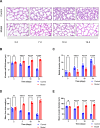
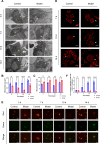

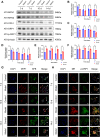
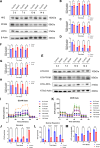

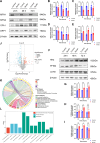
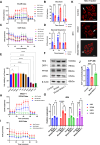
Similar articles
-
Glucagon-like peptide-1 receptor signaling activation in alveolar type II cells enhances lung development in neonatal rats exposed to hyperoxia.Redox Biol. 2025 May;82:103586. doi: 10.1016/j.redox.2025.103586. Epub 2025 Mar 6. Redox Biol. 2025. PMID: 40080965 Free PMC article.
-
Hyperoxia exposure arrests alveolarization in neonatal rats via PTEN‑induced putative kinase 1‑Parkin and Nip3‑like protein X‑mediated mitophagy disorders.Int J Mol Med. 2020 Dec;46(6):2126-2136. doi: 10.3892/ijmm.2020.4766. Epub 2020 Oct 22. Int J Mol Med. 2020. PMID: 33125104 Free PMC article.
-
Mitochondrial Fission-Mediated Lung Development in Newborn Rats With Hyperoxia-Induced Bronchopulmonary Dysplasia With Pulmonary Hypertension.Front Pediatr. 2021 Jan 28;8:619853. doi: 10.3389/fped.2020.619853. eCollection 2020. Front Pediatr. 2021. PMID: 33634054 Free PMC article.
-
Hyperoxia reduces STX17 expression and inhibits the autophagic flux in alveolar type II epithelial cells in newborn rats.Int J Mol Med. 2020 Aug;46(2):773-781. doi: 10.3892/ijmm.2020.4617. Epub 2020 May 27. Int J Mol Med. 2020. PMID: 32467992 Free PMC article.
-
New perspectives on the role of Drp1 isoforms in regulating mitochondrial pathophysiology.Pharmacol Ther. 2020 Sep;213:107594. doi: 10.1016/j.pharmthera.2020.107594. Epub 2020 May 29. Pharmacol Ther. 2020. PMID: 32473962 Review.
Cited by
-
Hyperoxia-induced senescence in fetal airway smooth muscle cells: role of mitochondrial reactive oxygen species and endoplasmic reticulum stress.Am J Physiol Lung Cell Mol Physiol. 2025 Jul 1;329(1):L1-L18. doi: 10.1152/ajplung.00348.2024. Epub 2025 Apr 4. Am J Physiol Lung Cell Mol Physiol. 2025. PMID: 40183670 Free PMC article.
-
Energy Metabolism and Brain Aging: Strategies to Delay Neuronal Degeneration.Cell Mol Neurobiol. 2025 Apr 21;45(1):38. doi: 10.1007/s10571-025-01555-z. Cell Mol Neurobiol. 2025. PMID: 40259102 Free PMC article. Review.
References
-
- Gilfillan M, Bhandari V. Moving bronchopulmonary dysplasia research from the bedside to the bench. Am J Physiol Lung Cell Mol Physiol. 2022;322(6):L804–21. - PubMed
-
- Álvarez-Fuente M, Arruza L, Muro M, Zozaya C, Avila A, López-Ortego P, González-Armengod C, Torrent A, Gavilán JL, Del Cerro MJ. The economic impact of prematurity and bronchopulmonary dysplasia. Eur J Pediatr. 2017;176(12):1587–93. - PubMed
-
- Katz TA, Vliegenthart RJS, Aarnoudse-Moens CSH, Leemhuis AG, Beuger S, Blok GJ, van Brakel MJM, van den Heuvel MEN, van Kempen A, Lutterman C, Rijpert M, Schiering IA, Ran NC, Visser F, Wilms J, van Kaam AH, Onland W. Severity of Bronchopulmonary Dysplasia and Neurodevelopmental Outcome at 2 and 5 years corrected age. J Pediatr. 2022;243:40–e4642. - PubMed
MeSH terms
Substances
Grants and funding
LinkOut - more resources
Full Text Sources
Miscellaneous

